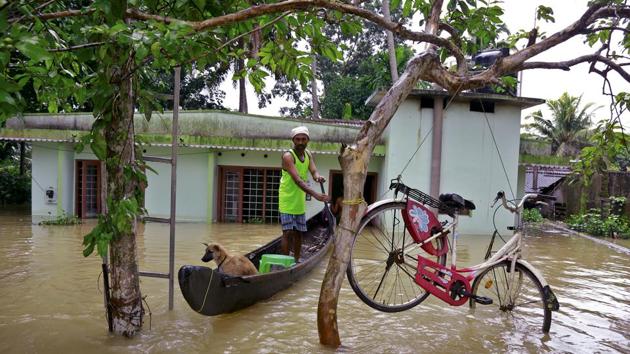Our understanding of the dynamics of risks of disasters is still far from comprehensive
Our multi-hazard early warning systems have improved, but we are yet to develop a modern EWS for floods.
The devastating flood in Kerala has claimed more than 400 lives, besides damaging 8,000-plus houses and a vast network of infrastructure. The direct economic loss, according to the state government, is estimated to be around Rs 19,512 crore, but the indirect environmental and opportunity costs could be much more. While the state may take months, if not years, to recover, the country must be concerned about a disturbing trend in flooding seen in recent years.

First, floods are the most common and recurrent natural disaster in India, but their frequency and intensity have increased in recent years. In the last five years, the country has faced catastrophic floods in Uttarakhand, Jammu and Kashmir, Tamil Nadu, Gujarat, and now in Kerala, whereas such floods used to happen once-in-a-decade or even in a longer timeframe.
Second, earlier floods were mostly riverine in nature, confined to the Brahmaputra-Barak Valley, the Indo-Gangetic plains and the deltaic regions of Odisha, Andhra Pradesh and Kerala. Now incidences of flooding are being reported from smaller river valleys, hills, plateaus, even deserts.
Third, urban areas are getting flooded much more frequently, and these are not limited only to cities on rivers or coasts. Now even cities such as Bangalore and Jaipur get flooded.
A number of factors are responsible for this new trend of flooding in the country.
First, the rainfall pattern is changing. While the average seasonal rainfall has not changed much, its distribution in space and time is changing: this is leading to an increase in the number of dry days, decrease in the number of rainy days, more intense downpours in fewer days, and heavier rains in areas that had scanty atmospheric moisture.
This has put pressure on the resilience of dams, drains and flood protection network, which were designed on parameters based on past rainfall/flooding pattern. They have now outlived their relevance. Their resilience has also been compromised, thanks to poor maintenance. Some of the colonial-era railway and highway bridges and dams are in dire need of an overhaul, retrofitting, even reconstruction. Much of the new infrastructure, houses and industries may not fulfil the global standards of resilience.
In our strategic approach to development, we are driven exclusively by short-term gains of value addition, profit and comfort; we hardly factor eco-system services in the cost-benefit analysis and calculation of internal rate of return of projects.
Our water bodies and flood plains, which provide natural cushions to absorb and drain excess water and recharge groundwater, have been encroached upon by unplanned expansion of cities and other human settlements. Our forests and bio-diversity, which help to protect slopes, prevent landslides and protect the environment, have been damaged by unregulated mining, quarrying and other development projects. The consequences are there to be seen in the damages and destructions of floods in Kerala, Kashmir and Uttarakhand.
We are committed by our policies and legislations to reduce risks and build resilience, but overtly and covertly, we are creating new risks of disasters that are compounding the already existing layers of hazard, vulnerabilities and risks. The Disaster Management Act 2005 and the National Policy on Disaster Management 2009 prescribed integrating disaster risk reduction in the process of development across all sectors and at all levels, but such integration and mainstreaming has remained largely elusive.
Our understanding of the dynamics of risks of disasters is still far from being comprehensive. Our multi-hazard early warning systems (EWS) have improved, but we are yet to develop a modern EWS for floods. We are able to forecast rain with reasonable degree of accuracy, but we are not yet ready with flood warning that would facilitate evacuation of people from the to-be-flood affected areas in the same manner as they are done during cyclones.
Despite the much talked about paradigm shift, our focus of disaster management is still largely on managing events of disaster (response, relief and rehabilitation) rather than on managing risks of disasters (risk assessment, risk prevention and mitigation and disaster preparedness). We spend more than 90% of our national and state budgets on disaster management (annually, around Rs 20000 crore by my calculation) on disaster response and relief, but we are yet to set up national, state and district mitigation funds that were mandated by law.
The tragedy of Kerala signals that the much-hyped shift in disaster management is yet to be achieved.
PG Dhar Chakrabarti is former executive director of National Institute of Disaster Management
The views expressed are personal
(This is the first in a series of columns on the increase in extreme weather events like the Kerala floods)



